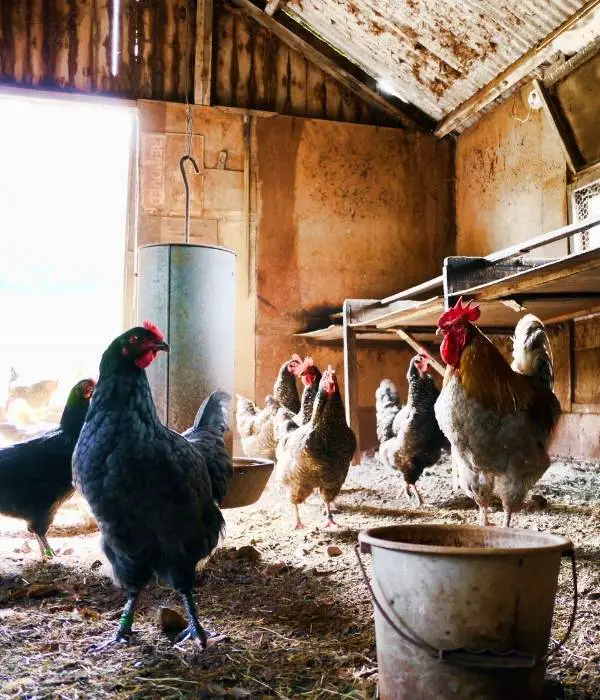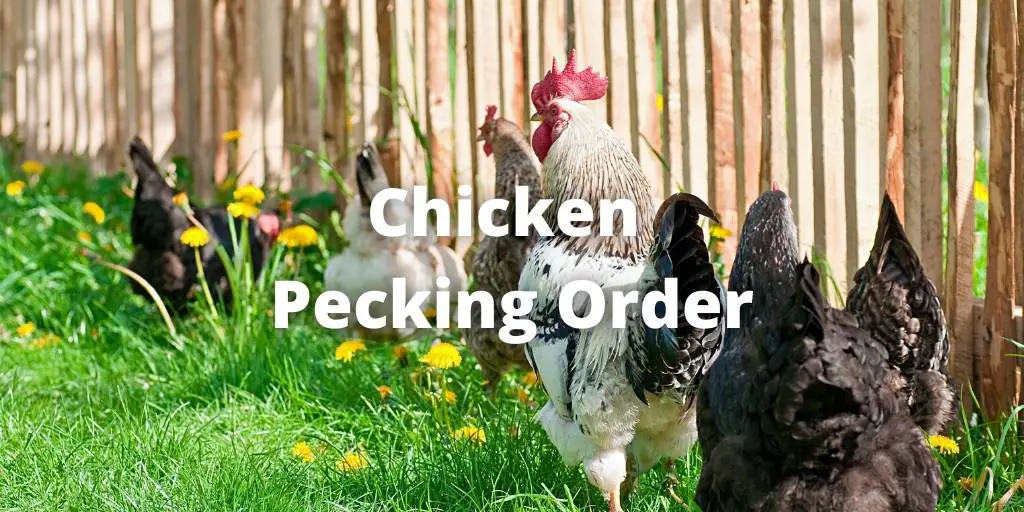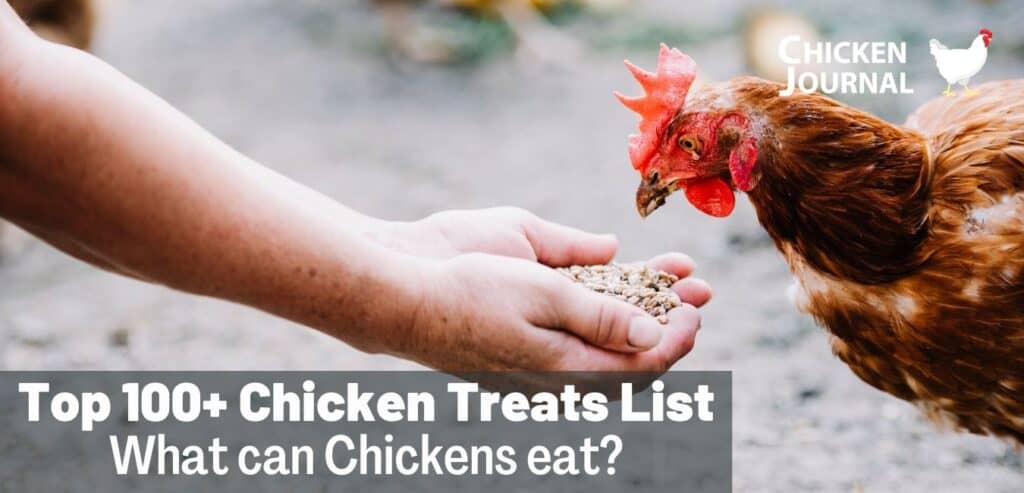People often wonder about the chicken pecking order. How it is that birds can maintain a social hierarchy without any use of verbal communication is a mystery.
This blog post will explore the complex chicken pecking order with the ultimate goal of getting even the most determined chicken keeper to understand and accept that their birds are dictating the direction of their flock.
Also read: All about chicken bullying
What is the chicken pecking order?
This is a unique system by which chickens arrange their social hierarchy. The higher-ranked bird enjoys a position of power.
They enjoy the best food, the prime roosting locations, and a higher share of the coop’s resources. Conversely, the lower-ranked bird is relegated to a life of lower status, having to work harder to get the same things that their fellow chickens have.
It is this chicken pecking order that ensures a balanced, happy flock. We do not like to admit it, but chickens are intelligent creatures.

Just like all animals, they have their own hierarchy and their own pecking orders. Chickens are the same.
They have their own set pecking order and they maintain it in the same way that you or I would maintain a social hierarchy. By adopting certain roles and pecking orders, chickens are able to have a functioning society.
It is important to note that not all chickens will conform to this system, and they actually need social cues from each other to maintain their hierarchy.
The pecking order has some major advantages for the chicken owner. The first and most obvious is that it makes socialization easier for the birds, who, in their small form, will tend to be more easily intimidated by humans.
Types of chicken pecking order behavior
There are 4 common types of pecking order in chickens:
Rooster to hen
This is the most common type of chicken pecking order where there is one rooster and he is the leader of the hens. This type of pecking order in chickens is seen in small flocks with a single rooster.
This is one of the safest and happiest chicken flocks because the rooster takes care of his hens very well and all the ladies follow his commands.
Rooster to rooster
This rooster-to-rooster pecking order is also seen on most farms. The strongest rooster gets to make all the decisions, and the weaker rooster has to just “sit back and take it”.
The roosters will not fight each other. Attacking the chicken who is higher in the hierarchy is tantamount to committing suicide for a chicken, so bad things will not happen.
But the rooster of lower rank is fair game and a regular victim of attacks. In the absence of the rooster,the most dominant hen will take over the leadership role.
There will be times when the hierarchy will be disrupted, and then the chickens will need to fight to re-establish dominance.
Hen to hen
This occurs when a hen sets up its own pecking order within the flock and will start attacking other hens for dominance. This is common when new hens are introduced to a flock.
Fighting can be intense, and sometimes even death is the result. The pecking order among hens will be disrupted if a new hen joins the flock, and then everything must be re-established.
Hen to rooster
If there is a rooster in the coop, the hens will defer to him… Unless, of course, the rooster is very weak or there are no other roosters. Then she will be free to bully the other hens and dominate them.
The same thing happens if all the chickens in the coop are hens. And if there are no roosters and the owner decides to buy a rooster, the hen will bully him like the rest. This is an altered type of pecking order, which is not common.
Also read: Hen Vs Rooster (Complete guide)
The importance of chicken pecking order

There are several benefits to the chicken pecking order:
Ensure harmony in the flock
The pecking order will keep the flock in a state of harmony and prevent fighting. The weaker birds will not be interested in fighting other chickens for dominance, as it is a waste of energy since there are no roosters around to fight with.
Encourage the timid birds to eat
By letting lower-ranking birds eat before the higher-ranking birds, they are able to get a good feeling of safety and they will be encouraged to eat more. By eating more, the weak bird can stand out from the flock and feel more confident.
Prevents fighting among hens
Contrary to popular belief, chickens can be aggressive towards each other. An aggressive bird will attack the lower-ranking chicken. Hens are known to attack other hens to establish dominance.
Allows introducing new birds into the flock without problems
When a new chicken is introduced, the chickens will establish their hierarchy and let the new bird adjust to his position. But the best way to introduce the new chicken is to let the chickens live together for a few days before introducing the new bird.
Roost space
Roosting occurs after each meal and is the chicken’s choice. It is a good idea to encourage each bird to eat and drink as long as possible.
Even the most difficult of birds can be encouraged to go to roost by using the chicken pecking order and their desire for safety and comfort.
You may want to provide more roosting space than is necessary and use perches that are wider than your chickens. This will prevent timid birds from being knocked off if they choose to roost in the middle of the perch.
Factors affecting chicken pecking order

Here are some common facts that affect chicken pecking order:
The chicken’s sex
Roosters and hens are different in their pecking order and dominance. When you add some new roosters and hens to your flock, they will try to establish their hierarchy to adjust their levels.
The new added hens or pullet try to mix themselves in the ladies group for comfortable grazing, and the roosters or cockerels try to fight and suppress themselves against the powerful ones.
The size of the flock
Small flocks of less than 10 chickens will have a similar pecking order to large flocks. The chickens in larger flocks tend to be more aggressive, and the fear of dominance will keep them from eating or drinking until they are certain they are not in danger.
The age of the chicken
The older chickens will have a higher position in the pecking order than the younger chickens. As the younger youngsters grow up to be adults, they will soon move up in the pecking order.
This is because those roosters and hens are experienced in all aspects, like dangerous things, foraging, predators, and free-ranging areas.
The behavior of the chicken
Roosters that are aggressive and attack other chickens are more likely to be attacked themselves. The same goes for hens that fight aggressively.
Not all the hens fight, some calm and quiet breeds live very happily.
The number of roosters
The more roosters in a flock, the higher the chances of one of them becoming dominant and making the other birds respect his dominance. Having an odd number of roosters is better suited for flocks with an odd number of hens.
Keeping fewer roosters is always recommended to reduce fights. Read our guide to understand the hen vs rooster ratio.
The breed of the chicken
The most aggressive breeds will make other chickens timid. For example, a rooster may not be aggressive, but his hen can be quite aggressive. Hens of the same breed will also be more aggressive, as will roosters of that breed.
Chicken’s health
Healthy and strong chickens will have a higher chance of entering the pecking order than sick or weak chickens. A healthy hen or rooster forages actively and supports his or her group very effectively.
Time of day
The time of day can trigger pecking order behavior. This is when the birds are most active and when they do their socializing. The chickens will prefer to roost at night and eat, drink mostly during the day.
At night, chickens love to sleep and be more comfortable, while during the day they free range and fight for bugs and food.
Common pecking order problems
Pecking order is beneficial and still it has some hitches. Here are a few common problems that can appear:
Hens stop laying eggs if they are bullied too much
During the pecking order, the weaker hens may be attacked by more dominant hens. This can cause the hens to stop laying eggs. This is not usually a problem in small flocks or when the hens are free to choose their level of aggression.
Roosters and hens that are new in the flock will be bullied and become timid
A new chicken will take a few days to establish its place in the pecking order. During this time, the new birds can become unhappy and stop eating or drinking. It will also try to avoid the other birds and even their food source.
Chicken pecking order may cause some birds a lot of injuries
Some chickens take the pecking order way too seriously. This can lead to many injuries and cannibalism among the flock, especially when a new bird is introduced.
Injuries may include bleeding, bruising, and even broken bones. One of my newly added roosters fought with an old top pecking order rooster, and the top rooster attacked them, which led to severe comb bleeding.
Force the chicken to reach its peak weight
It is important that chickens are free to reach their peak weight. If they are forced to eat only during certain periods, they will actually weigh more than they normally would at that time.
Sometimes limiting food for specific reasons becomes wrong and you may see growth retardation. This type of issue is mostly seen in cornish chickens.
Chicken pecking order may cause stress in the flock
The pecking order among chickens can create a lot of stress. The bullying and squabbles among hens can lead to stress and exhaustion in the whole flock. This can damage their immune systems, make them sick, and even lead to death.
How to avoid the chicken pecking order problems?

The pecking order may cause injuries and excessive bullying in the flock but there are a number of ways that you can stop it before it becomes serious.
Below are some of the most common ways to manage them.
Make sure there is enough space for all hens
This sounds simple, but it is actually the most important factor in preventing pecking order problems. The more space there is for each bird, the less likely it is that any one bird will be hurt or excessively bullied.
Keep hens safe in your coop
If you have very small coops, it may not be possible to discard the bullying. In that case, you should keep the bullying to a minimum by making sure there is plenty of room for the harassed chickens.
Also, provide good quality nesting boxes for your hens separately so that they will stay away from roosters and lay their eggs comfortably.
Provide each chicken with its own roosting space
Roosting is a very important activity for chickens. Chickens will prefer to roost in groups if they are free to choose.
They will also increase their chances of survival by being a part of a group that protects them from predators. It is not good for chickens to live in isolation.
Provide extra feeding and water space to all chickens
Make sure that all of the chickens have access to their food and water sources. They should not have to struggle or fight over it.
Provide them with a lot of entertainment
Make sure that you provide your chickens with plenty of entertainment. Hens will fight over the toys and their favorite resting places.
Letting your hens play with other birds or toys will prevent them from becoming bored and fighting over it. Here is a list of the best chicken toys for your ease.
Introduce a new bird to the flock slowly
When you introduce a new chicken to a flock, you should make sure that the rest of the poultry is ready for it. Otherwise, they will try to make it feel unwelcome or they will even attack it.
Do not let a group of chickens bully a single bird
If you notice that one chicken is being mobbed or bullied, you can separate the bullied bird from the rest of the flock and watch how they behave.
This way, you’ll know if it is a serious problem that requires intervention or if it can be solved by giving the isolated bird some time to settle in.
Make sure that all of your chickens are healthy and strong
You should keep an eye on your flock and make sure they are not being bullied by the weak or sick ones.
If they are all healthy, they will be able to protect each other from bullies. You should also make sure that the flock is well fed and protected from predators.
With good feed, provide some vitamins and minerals to the weak chickens. This will provide them a speedy recovery.
FAQs on chicken pecking order
When do chickens start pecking order?
Pecking orders start when the chickens are around three days old. After 2 weeks of age, they start showing their power to downline flocks.
How do chickens decide the pecking order?
Dominant chickens have this special type of call. They use it to show the other birds that they are more dominant and better than everyone else. Subordinate chickens that can not fight will respond by submissively clucking or by making themselves look smaller.
How to stop pecking orders in chickens?
The best way to prevent a pecking order is to give your chickens enough space. You should avoid overcrowding them. Make sure they have their own roosting areas and plenty of space to eat, drink, and play.
Conclusion
The pecking order behavior among hens and roosters is not only a strange habit but also a way of social communication between chickens in the flock.
This behavior can be important because it helps the chickens avoid aggression, injury, and unnecessary fighting. It is not only important for the flock but can also be helpful if you own chickens for sale.
The pecking order is a natural behavior in poultry flocks. You cannot stop the pecking order fully, but providing them with comfort may reduce chickens’ pecking order behavior and fighting among flocks.


